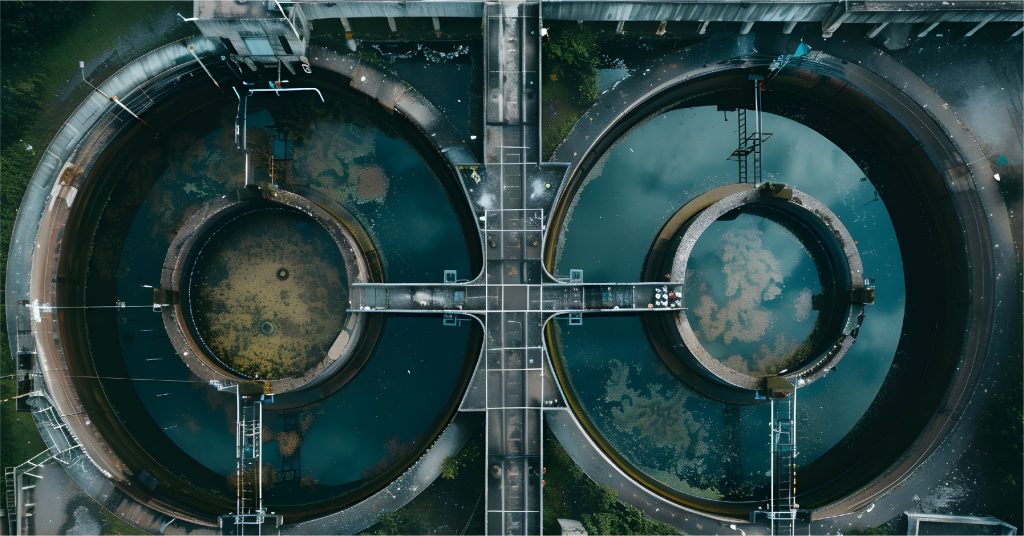Wastewater and sewage treatment are vital for maintaining public health, protecting the environment, and effectively managing water resources. But what is a sewage treatment plant, and why is it so important? A sewage treatment plant (STP) is a facility designed to treat and purify wastewater from residential, industrial, and commercial sources, removing harmful contaminants and returning clean water to the environment.
This guide provides a detailed look into the sewage treatment plant process, explaining its purpose, operation, and the different types of sewage treatment plants available.
What is a Sewage Treatment Plant?
A sewage treatment plant processes raw wastewater to remove contaminants, pathogens, and impurities, allowing the treated water to be safely discharged into water bodies or reused for non-potable applications. STPs are crucial for preventing sewage from polluting rivers, lakes, and oceans, reducing risks to ecosystems and human health.
These facilities utilize physical, biological, and sometimes chemical methods to treat wastewater, breaking down organic matter, separating solids, and eliminating harmful bacteria and pathogens. With the increasing need for sustainable water management, sewage treatment plants have become essential in both urban and rural areas.
Types of Sewage Treatment Plants
Different types of sewage treatment plant designs cater to various needs, depending on scale, location, and specific treatment requirements. Some of the most common types include:
- Conventional Activated Sludge (CAS): This widely used type aerates wastewater to promote the growth of bacteria that digest organic matter, followed by sedimentation to remove suspended solids.
- Membrane Bioreactor (MBR): MBR combines biological treatment with membrane filtration, producing high-quality effluent in a compact design, making it ideal for areas with limited space and strict purity requirements.
- Sequencing Batch Reactor (SBR): SBR operates in batches, making it flexible and suitable for communities with fluctuating wastewater flows.
- Rotating Biological Contactor (RBC): RBC systems use rotating discs to expose wastewater to oxygen, facilitating biological treatment. They are energy-efficient and suitable for smaller plants.
- Trickling Filter: This system uses a bed of filter material to support microbial growth, which breaks down contaminants as wastewater flows over the surface. It is effective for low-strength wastewater.
The Sewage Treatment Plant Process: Step-by-Step
The sewage treatment plant process consists of several stages, each targeting specific contaminants and preparing wastewater for safe discharge or reuse:
- Preliminary Treatment: Large debris such as plastics, rags, and sand are removed using screens and grit chambers. This step prevents equipment damage and clogging in subsequent stages.
- Primary Treatment: Wastewater flows into a sedimentation tank, where heavier solids settle as sludge, and lighter materials like grease and oil float to the top. These are removed, significantly reducing suspended solids.
- Secondary Treatment: This stage uses biological processes to break down organic material. Aerobic bacteria consume organic matter, transforming it into less harmful byproducts. Depending on the plant, technologies like activated sludge, MBR, or RBC may be used.
- Tertiary Treatment: Advanced techniques such as filtration, chemical disinfection, and nutrient removal further purify the water, making it suitable for discharge or reuse.
- Disinfection: Treated water undergoes a final disinfection process using chlorine, UV light, or ozone to eliminate any remaining pathogens.
- Sludge Treatment: Sludge collected during earlier stages is treated separately, often through anaerobic digestion. This process breaks down organic material, and the resulting sludge can be used as fertilizer or disposed of safely.
Benefits of Using Sewage Treatment Plants
Sewage treatment plants provide numerous benefits for communities, businesses, and the environment:
- Protects Public Health: By removing pathogens and contaminants, STPs prevent waterborne diseases and safeguard public health.
- Environmental Preservation: Treated wastewater can be safely returned to natural water bodies without harming aquatic ecosystems, reducing pollution and preserving biodiversity.
- Water Reuse: Treated water can be reused for irrigation, industrial processes, and landscaping, reducing the demand for fresh water and promoting sustainable water management.
- Resource Recovery: STPs capture valuable byproducts such as biogas and nutrients, which can be repurposed as energy or fertilizer, contributing to a circular economy.
Ion Exchange’s Expertise in Sewage Treatment Plant Solutions
Ion Exchange is a leader in innovative water and wastewater treatment solutions in the UAE. Our advanced sewage treatment plants are designed to meet the diverse needs of the country’s growing population and industrial sectors. With a focus on sustainability and efficiency, we offer customized solutions that incorporate cutting-edge technologies, ensuring optimal performance and environmental compliance.
- INDION New Generation Packaged Sewage Treatment Plant (NGPSTP): A prefabricated system combining lamella plate clarification and aeration for highly efficient treatment. This compact, modular system ranges from 10 to 100 m³/day and features minimal land usage, low operating costs, and reduced power and chemical requirements.
- INDION NGPSTP-NR: This system combines a fixed film reactor with lamella clarification, delivering high performance in a compact, corrosion-resistant design that is easy to manage.
- Sequencing Batch Reactor (SBR): This advanced activated sludge process operates in batch mode, allowing aeration and sludge settlement to occur in the same tank, offering flexibility and adaptability for varying wastewater volumes.
- Advanced Fluidized Media Reactor (AFMR): A compact single-tank unit with aeration, floating media, and a lamella settler. It offers reduced space requirements, lower power consumption, and minimal maintenance, making it an efficient choice for diverse applications.
Conclusion
Understanding what a sewage treatment plant is and how it works is essential for effective wastewater management. A well-designed sewage treatment plant process safeguards the environment, supports public health, and facilitates water reuse, making it a cornerstone of any sustainable water management strategy.


